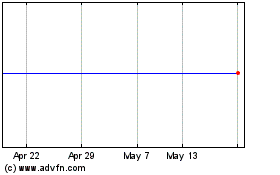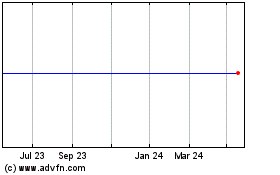-- The EWS I - 391 well, which was spudded on 25 December 2010,
was drilled in 19 days on the north-western part of the East EWS I
field. The well encountered the producing Jurassic P reservoir at
1,862 meters, confirming the presence of 4 meters of effective net
oil pay. The well was drilled directionally 1.0 km to the
north-west from the existing well pad 30, and will be connected to
existing production facilities upon completion of testing.
-- The EWS I - 38 well, which was spudded on 2 March 2011, was
drilled in 17 days on the eastern part of the East EWS I field. The
well encountered the producing Jurassic P reservoir at 1,858
meters, confirming the presence of at least 9.0 meters of effective
net oil pay within the Jurassic. The well was drilled directionally
1.1 km to the north-east from the existing well pad. On completion
of testing the well will be connected up to existing production
facilities.
-- The EWS I - 20 well, which was spudded on 13 April 2011, was
drilled in 24 days on the eastern part of the East EWS I field. The
well flowed water-free oil naturally to the surface with a flow
rate of 625 bbl/day on an 8 mm choke. The well encountered the
Jurassic P reservoir at 1,809 meters, confirming 14.6 meters of
effective net oil pay within the Jurassic. The well was drilled
directionally 0.9 km to the north-west from the existing well
pad.
-- The EWS I - 33 well, which was spudded on 20 March 2011, was
drilled in 15 days on the eastern part of the East EWS I field. The
well encountered the Jurassic P reservoir at 1,845 meters,
confirming the presence of 7.5 meters of effective net oil pay
within the Jurassic. The well was drilled directionally 0.5 km to
the east from the existing well pad.
-- The EWS I - 371 well, which was spudded on 5 April 2011, was
drilled in 19 days on the eastern part of the East EWS I field. The
well encountered the Jurassic P reservoir at 1,864 meters,
confirming the presence of 13.8 meters of effective net oil pay
within the Jurassic. The well was drilled directionally 1.5 km to
the east from the existing well pad. On completion of testing the
well will be connected up to existing production facilities.
-- The EWS I - 36 well, which was spudded on 26 April 2011, was
drilled in 21 days on the eastern part of the East EWS I field. The
well encountered the Jurassic P reservoir at 1,849 meters,
confirming the presence of 5.4 meters of net oil pay within the
Jurassic. The well was drilled directionally 1.2 km to the
south-east from the existing well pad. On completion of testing the
well will be connected up to existing production facilities.
Production
-- In June 2011, the Group reached a record monthly average
production rate of 9,161 bbl/day, of which 3,281 bbl/day and 5,880
bbl/day were contributed by Exillon TP and Exillon WS,
respectively.
-- For the six months ending 30 June 2011, the Group achieved an
average gross production rate of 7,860 bbl/day representing a 146%
increase over production levels of 3,195 bbl/day for the comparable
period in 2010.
-- Total crude oil revenues amounted to $88.4 million, an
increase of 222% over the comparable period in 2010 ($27.5
million). Exillon TP and Exillon WS generated crude oil revenues of
$34.0 million and $54.4 million, respectively.
Placement of Shares
-- The Group placed 23,438,000 new ordinary shares to
institutional investors. The price per share was 400 pence,
resulting in net proceeds to the Company of $ 146.1 million.
Prospecting Programme
The Group successfully completed its 2011 prospecting programme,
which included:
-- Acquisition of 250 square km of 3D seismic - results of
seismic interpretation will be ready in Q4 2011
-- Acquisition of 440 square km of gravimetric and magnetic
survey - preliminary results of magnetic survey support the Group's
hypothesis that EWS II and EWS III fields are in communication
-- Acquisition of 840 geochemical samples - results detected
hydrocarbon shows in areas targeted by the Group
Board and senior management structure
In April 2011, Exillon appointed David Herbert as a
Non-Executive Chairman of the Board. David has more than 20 years
experience in investment banking, including most recently as
Managing Director and Head of International Corporate Finance at
ING Bank N.V. David also has considerable experience in the oil and
gas industry, having worked for more than 10 years at BP, where he
served in a variety of senior management positions.
In June 2011, Exillon appointed Mark Martin as Chief Executive
Officer and Member of the Board of Directors. Mark has more than 20
years experience in investment banking. He has significant oil and
gas experience, including in Central and Eastern Europe and the
FSU, and has advised on numerous high-profile and successful
M&A and capital raising initiatives on behalf of oil and gas
clients in the region. Mark will be permanently based in
Moscow.
Field infrastructure development
The Group has completed the following infrastructure projects
during the reporting period:
-- Construction of the first stage of oil processing facility on
the EWS II field
-- 18.7 km of electricity lines that will allow the Group to
save on diesel costs upon installation of gas power generating
units in Q3 2011
-- 10.8 km of infield pipelines enabling production from
isolated well pads
-- 17.5 km of all season roads allowing for year-round access to
major fields in Exillon WS
-- Construction of well pads 2, 4, 32 and enlargement of well
pads 1, 3 and 30 for further development drilling in Exillon WS
-- Infrastructurefor a water injection system at Exillon TP:
water well drilled and connected by a 3.6 km high-pressure pipeline
to an injection well (Well #1VV)
In addition, the Group has obtained regulatory approvals for
construction of entry point to the Transneft pipeline system;
subcontractors have been appointed and construction has begun. The
Group has also begun the construction of an oil treatment unit at
Exillon TP, and is completing installation of gas power generators
with 3MW capacity in Exillon WS.
FINANCIAL REVIEW
The interim condensed consolidated financial information of
Exillon Energy plc for the six month period ended 30 June 2011 has
been prepared in accordance with IAS 34 "Interim Financial
Statements". The condensed consolidated financial information and
notes on pages 10 through to 27 should be read in conjunction with
this review which has been included to assist in the understanding
of the Group's financial position at 30 June 2011.
Summary
The Group maintained a healthy financial position due to its
issuance of new shares in 2011 and its increasing production
volumes. In April 2011, the Group issued 23,438,000 of new shares
with total gross proceeds of $153.4 million. Costs related to the
issuance of new shares amounting to $7.3 million were recorded in
the share premium account as directly attributable to the equity
cost.
Income statement
The Group's revenue for the six months ended 30 June 2011
comprised revenue from the sale of crude oil and amounted to $88.4
million (2010: $27.5 million), of which $52.5 million or 59% came
from export sales and $35.9 million or 41% came from domestic
sales. The increase in revenue was driven by the acceleration of
production: a 7.7% increase to 563,104 bbl (2010: 522,660 bbl) in
Exillon TP production following our well optimisation programme in
the six months ended 30 June 2011 and a 1,317% increase to 860,172
bbl (2010: 60,712 bbl) in production of Exillon WS. The Group
achieved an average oil price of $107/bbl (2010: $71/bbl) for
export sales and $42/bbl (2010: $28/bbl) for domestic sales,
reflecting the general increase in crude oil prices during the
period.
Cost of sales, net of depreciation, depletion and amortisation
increased to $35.5 million or 40% of the Group's revenue (2010:
$12.2 million or 44% of the Group's revenue) due to an increase in
production of 144% to 1,423,276 bbl (2010: 583,372 bbl).
The Group's depreciation, depletion and amortisation costs
primarily relate to the depreciation of proven and probable
reserves and other production and non-production assets. These
costs totalled $5.8 million (2010: $3.3 million) or 6.6% of the
Group's revenue (2010: 12%). The increase in DD&A costs is
driven by higher production volumes.
Selling expenses for the six months ended 30 June 2011 were
$36.5 million (2010: $13.1 million) or 41% of the Group's revenue
(2010: 48%), comprised of export duties of $27.5 million (2010:
$10.3 million), which represented 52% of the Group's export sales
(2010: 53%); transportation services of $8.1 million (2010: $1.7
million); and other selling expenses of $0.9 million (2010: $1.1
million). Export duty rates increased from the beginning of the
period by 40%, from $317.5 per tonne to $445.1 per tonne reflecting
the increase in crude oil prices.
Administrative expenses totalled $8.7 million (2010: $7.0
million) amounting to 10% of the Group's revenues (2010: 26%). The
change is primarily attributable to an increase in salaries and
consulting costs.
As a result of the above, the Group reported a profit after tax
of $11.2 million compared to a loss of $8.7 million for the six
months ended 30 June 2010.
It should be noted that - in accordance with IFRS - an element
of foreign exchange gain has been included in the net income of the
company resulting from the translation of foreign currency monetary
items using the closing rate at the reporting date. A larger
foreign exchange gain has been applied directly to the consolidated
statement of financial position as the part of translation reserve
being the result of the translation of a reporting entity's net
investment in the foreign operations.
Financial position
Exillon Energy (LSE:EXI)
Historical Stock Chart
From Aug 2024 to Sep 2024

Exillon Energy (LSE:EXI)
Historical Stock Chart
From Sep 2023 to Sep 2024
